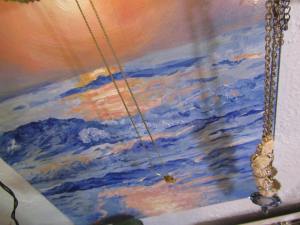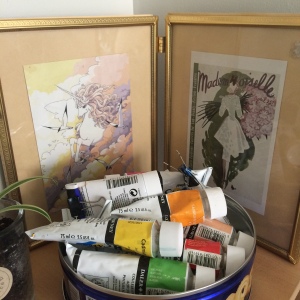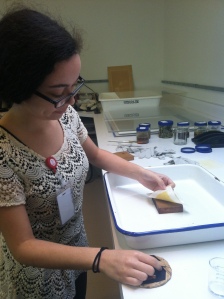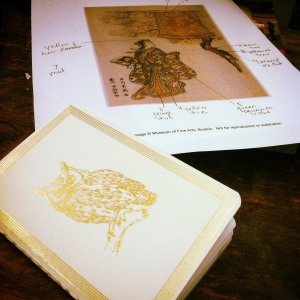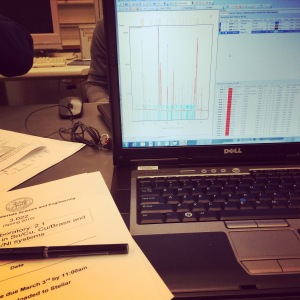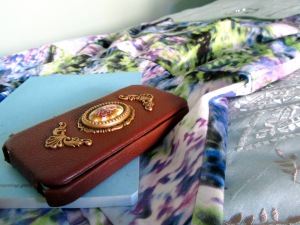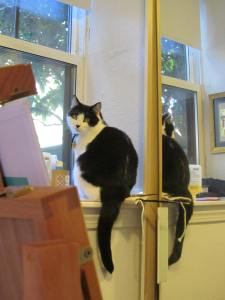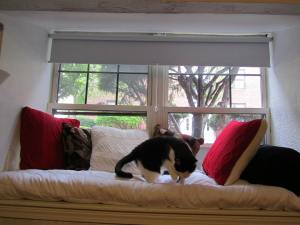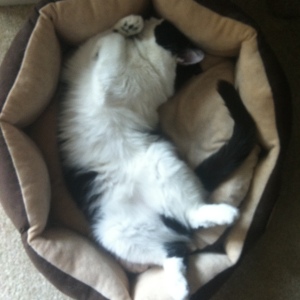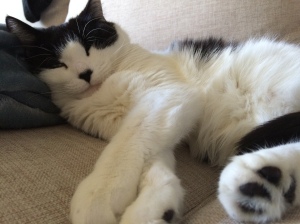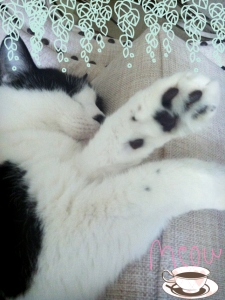Despite efforts to organize and protect themselves, migrant workers face the threat of deportation at the behest of the companies that employ them. This threat destabilizes their relationships with one another as far as shared class interest and also leads to health risks due to stress and lack of time to prepare healthy food. Latin@ workers have been racialized, starting with the mestizo workers from the annexation of Mexico and on to the
[embed]https://www.youtube.com/watch?v=nkNv5Y1_Q4c[/embed]
The desire to support a nuclear family is the motivational narrative for migrant workers. Again, the young man is depicted in the field while the woman is the domestic worker – keeping house and caring for children at home. While the mother is smiling and supportive of the man in a clean small apartment, the man is recognizes the struggle of his work as he labors in the field. La Stanta Cecilia doesn’t explicitly state his unhappiness or vulnerability to abuse. However, we can infer that his need to support a family limits his ability to unionize or risk deportation and unemployment.
Women are at additional risk of rape and sexual abuse from farmers and supervisors.
Our typical ideas of migrant workers' risk focus on able bodied young men due to their race and migrant status. The presentation of the nuclear family is used to engender support from the average person. The occasional coverage of the sexual exploitation and abuses that women face ties into the US focus on human trafficking for sexual exploitation.
Our narrative presumes the natural ability of men to perform hard agricultural labor, racial stigma marginalizes these men’s access from the rugged American individualism that deserves governmental protection and support.
Consider the image of the cowboy. You probably imagine a young white man leaning against a fence, holding a cowboy hat over his eyes, in the middle of a field. Perhaps a horse or buffalo stands in the background, stark against a pale blue Kansas sky. Too specific? Anyway, you probably imagined a white man as the image of the rugged individual.
While most hacendados (ranch owners) were ethnically Spanish criollos,[22] many early vaqueros were Native Americans trained to work for the Spanish missions in caring for the mission herds. (via wikipedia Cowboys)
Of course the reality is that Americans learned how to herd cattle on the plains of central North America from mestizo cow hands - yes, Latin@-indigenous people taught us how to be cowboys.
[S]ignificant number of African-Americanfreedmen also were drawn to cowboy life, in part because there was not quite as much discrimination in the west as in other areas of American society at the time.[54] A significant number of Mexicans andAmerican Indians already living in the region also worked as cowboys. (via wikipedia Cowboys)
Racism against blacks has erased the labor of black cowboys. Blacks made up about 20% of the cowboy work force. Most importantly, many of them were veterans of the Civil War, patriots of freedom and the equality of man. Yet they show up in few of our modern imaginings of the Wild West. Surely, black cowboys embody the values of individual labor and valor against all odds, those of nature and those of man. But excluded from media portrayals of the nobleness of hard labor, black bodies are left with the indignities and hardships of labor.
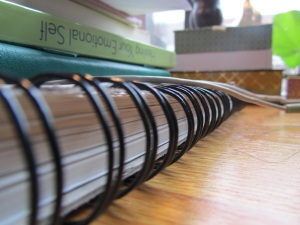
Latin@ bodies and black bodies have both been coded as simultaneously lazy and more capable of labor. By naturalizing the strength born of hard labor under strenuous conditions, white bosses are able to justify those very difficult working conditions that produce strength and maintain high expectations of production. Overseers claim they must be invasive in the lives of Latin@ and black workers due to the stereotype of the worker's laziness or childlike incompetence. Companies take on the role of paternalistic guidance, the same role that slave owners took on. Racist stereotypes have historically and are currently used to extract the most labor possible from workers while preventing them the freedom to unionize or find better work.
So too do racial stereotypes allow commentators to detract from and devalue Latina women for a failure to perform feminine gender labor, such as child rearing and domestic labor. I read into these the presumption that Latina women are both more prone to providing this labor and less “real women” than white women –the perfect combination for economic exploitation. The final reading explains why and how Latina women are increasingly commoditized as providers of feminine (sex) and domestic labor (child care), either against their will or within the parameters of economic-coercion.
Already, we are familiar with the way black women were simultaneously described as inherently excessively promiscuous and naturally caring towards children. These two tropes were trotted out to alternatively support white men's ability to sexually abuse black slaves and white women's access to black women's physical and emotional labor in domestic child rearing.
And ain't I a woman? I have borne thirteen children, and seen most all sold off to slavery, and when I cried out with my mother's grief, none but Jesus heard me! And ain't I a woman?
Sojourner Truth, Ain't I a woman
